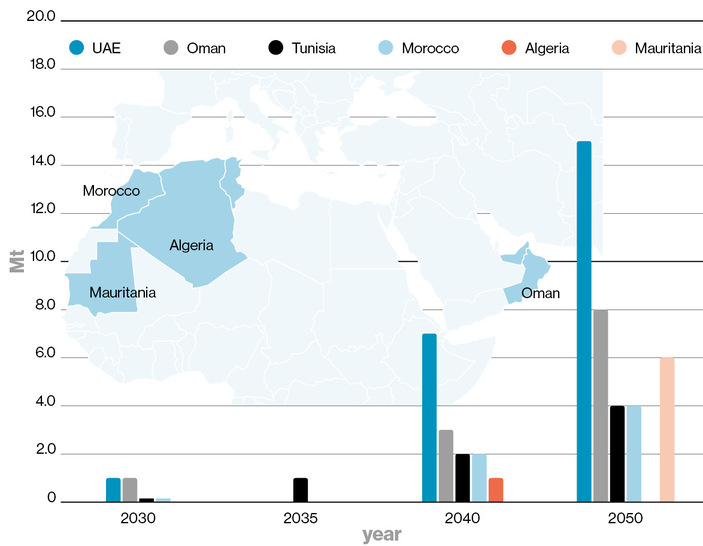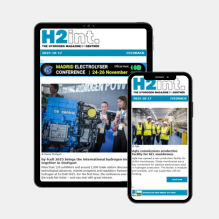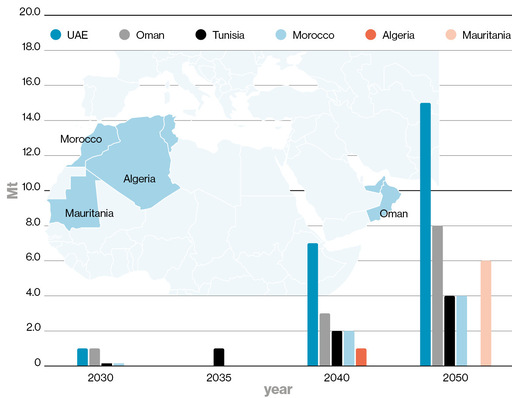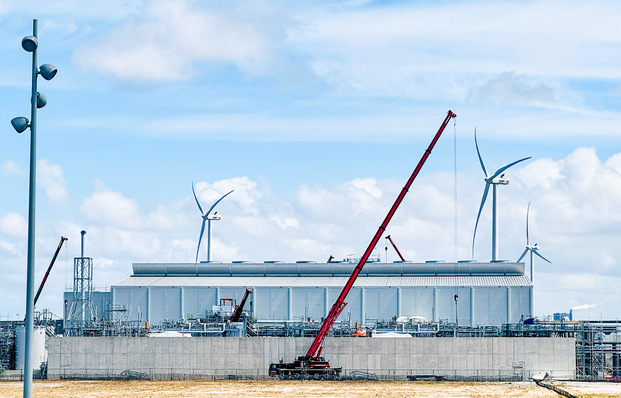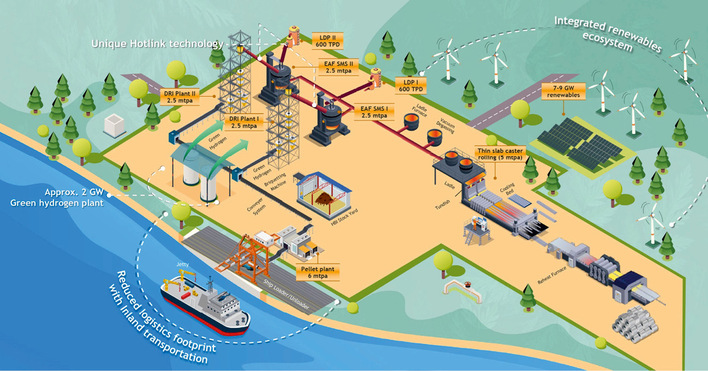Under the name “Desertec Industrial Initiative”, a group of German industrial corporations launched an attempt to generate electricity in North Africa in 2009. However, just a few years later, the consortium disbanded. The core team continued to pursue the idea and established connections with companies from the “Middle East and North Africa” region, or MENA for short. The Desertec Industrial Initiative became Dii Desertec Energy GmbH, which increasingly shifted its activities to its new office in Dubai. In the report “A Green Revolution – A Socio Economic Perspective on Renewables and Hydrogen in the MENA Region”, Dii also addresses the topics of employment, local value creation and water scarcity.
Here is an overview of the top seven from the MENA region.
The United Arab Emirates (UAE) published a hydrogen strategy in 2023, the “National Hydrogen Strategy 2050”. It sets the following targets: 1.4 Mt (46.7 TWh) of annual hydrogen production by 2031, 7.5 Mt (250 TWh) by 2040 and 15 Mt (500 TWh) by 2050.
Oman outlined its hydrogen targets in the 2022 strategy “Green Hydrogen in Oman”. For the year 2030, the country aims to produce 1 to 1.25 Mt (33.3 to 41.7 TWh) of hydrogen annually. By 2040, this is expected to rise to 3.25 to 3.75 Mt (108.3 to 125 TWh) per year. In 2050, Oman plans to produce 7.5 to 8.5 Mt (250 to 283.3 TWh) of hydrogen annually.
Tunisia’s hydrogen strategy is called “H2Vert.TUN-Green hydrogen strategy” and dates from 2023. It projects hydrogen production of 0.32 Mt (10.7 TWh) for 2030. This will increase to 1.1 Mt (36.7 TWh) in 2035, then to 2.1 Mt (70 TWh) in 2040. By 2050, the figure is expected to reach 8.3 Mt (276.6 TWh). For the first time, an export volume is also specified: 6 Mt (200 TWh).
Morocco has detailed its hydrogen plans in two documents: the “Feuille de Route de l’Hydrogène Vert” from 2021 and the “Morocco Offer” from 2024. The roadmap outlines three phases. By 2030, Morocco aims to produce 0.4 Mt (13.9 TWh) of hydrogen, of which 0.3 Mt (10.3 TWh) is intended for export. In 2040, the figure is expected to be 2 Mt (67 TWh), with 1.4 Mt (45.9 TWh) for export. By 2050, hydrogen production in Morocco is to rise to 4.6 Mt (153.9 TWh), of which 3.4 Mt (114.7 TWh) is for export.
Algeria adopted a hydrogen strategy in 2023, the “Stratégie Nationale de Développement de l’Hydrogène en Algérie”. By 2040, the country aims to produce 1.2 Mt (40 TWh) of hydrogen annually. Of this, 0.9 Mt (30 TWh) is intended for export and 0.3 Mt (10 TWh) for local use.
Mauritania adopted the “Feuille de route pour l’Industrie d’hydrogène à faible empreinte de carbone en Mauritanie” in 2022. According to this, 6.46 Mt (215.3 TWh) of hydrogen are to be produced annually by 2050, of which 4.3 Mt (143.3 TWh) are for export. No figure is given for 2040.
Egypt has announced a hydrogen strategy, but has not yet published it. However, it did publish a renewable energy strategy in 2023.


